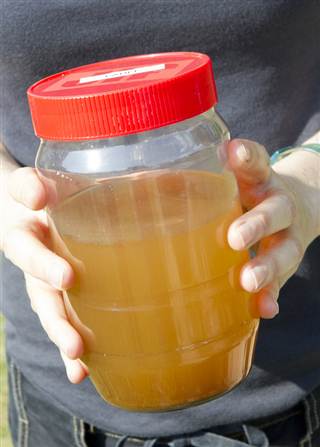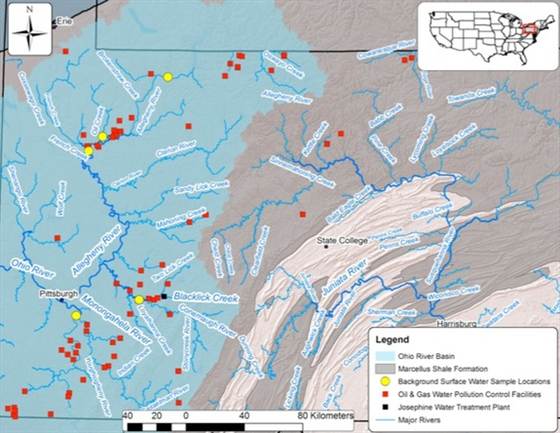Anne C. Mulkern, E&E reporter
Published: Friday, October 4, 2013
Hydraulic fracturing operations in the waters off California’s coast
break multiple environmental laws, a green group warned yesterday in a
letter to two federal agencies.
The Center for Biological Diversity asked the Bureau of Ocean Energy
Management and the Bureau of Safety and Environmental Enforcement to
halt offshore operations that use unconventional drilling, including
the process known as fracking.
Oil and natural gas company operations in the Pacific Ocean need to go
through a supplemental National Environmental Policy Act (NEPA)
analysis, the letter said. That would look at potential threats to
environment and wildlife in the area, “which hosts the world’s densest
summer concentrations of blue whales,” Center for Biological Diversity
said.
The agencies need to take corrective action or face a lawsuit from the
green group, said the Center for Biological Diversity.
“Oil companies are fracking California’s beautiful coastal waters with
dangerous chemicals, and federal officials seem barely aware of the
dangers,” Miyoko Sakashita, an attorney and director of the Center’s
oceans program, said in a statement. “We need an immediate halt to
offshore fracking before chemical pollution or an oil spill poisons the
whales and other wildlife that depend on California’s rich coastal
waters.”
The Associated Press in August reported that companies including Venoco
Inc. and Chevron Corp. have fracked offshore wells. Federal regulators
have permitted at least a dozen instances of hydraulic fracturing in
the Pacific Ocean since the late 1990s, AP reported, citing federal
documents obtained through Freedom of Information Act requests.
At a California Coastal Commission meeting a week later, Brian Segee,
staff attorney with the Santa Barbara-based Environmental Defense
Center, said that most of the leases in question have existed for years
and have changed ownership several times. California bans new leases
for offshore drilling (EnergyWire, Aug. 16).
The center’s letter went to Bureau of Ocean Energy Management Pacific
Region Director Ellen Aronson and Bureau of Safety and Environmental
Enforcement Pacific Region Director Jaron Ming. Neither immediately
responded to reporter inquiries sent after business hours local time in
California.
The Western States Petroleum Association, a trade group for oil and
natural gas companies, also did not immediately reply to a request for
comment. WSPA, as it’s known, has argued that the California
Environmental Quality Act, or CEQA, has not applied to onshore fracking
operations.
Kassie Siegel, senior counsel at the Center for Biological Diversity,
said that NEPA applies to offshore fracking under the same theory used
in a recent lawsuit in California. In that case, a federal judge ruled
that the Bureau of Land Management improperly issued oil and gas leases
in California’s massive Monterey Shale without considering the effects
of hydraulic fracturing on leased lands (EnergyWire, April 9).
“That suit focused on onshore fracking on public land in central
California, but the judge made it clear that NEPA applies to fracking,”
Siegel said.
The Center for Biological Diversity subsequently filed a similar case.
It has been in settlement talks with BLM on the remedy in the first
case and on merits and remedy in the second case, said Brendan
Cummings, the CBD attorney in the case.
“As with onshore leases issued by BLM where the agency never looked at
fracking, offshore fracking has also never been analyzed in any NEPA
document, as fracking wasn’t considered at all in the old
[environmental impact statements] or [environmental assessments] for
the original lease sales, nor in the more recent, very cursory NEPA
done for more recent drilling permits on those leases,” Cummings said.
“Approving any offshore drilling that involves fracking without new
NEPA is unlawful, and this letter puts the agency on notice of such,”
he added.
Yesterday’s letter sent to the agencies said that under NEPA, agencies
not only must perform analyses prior to taking federal action but must
conduct supplemental review whenever “[t]here are significant new
circumstances or information relevant to environmental concerns and
bearing on the proposed action or its impacts.”
The green group also noted provisions in the Outer Continental Shelf
Lands Act (OCSLA).
“The Bureaus are required to ‘[p]revent damage to or waste of any
natural resource, property, or the environment,'” the letter said,
citing the law, “and have the authority to suspend ‘any operation or
activity, including production, pursuant to any lease or permit … if
there is a threat of serious, irreparable, or immediate harm or damage
to life (including fish and other aquatic life), to property … or to
the marine, coastal, or human environment.'”

